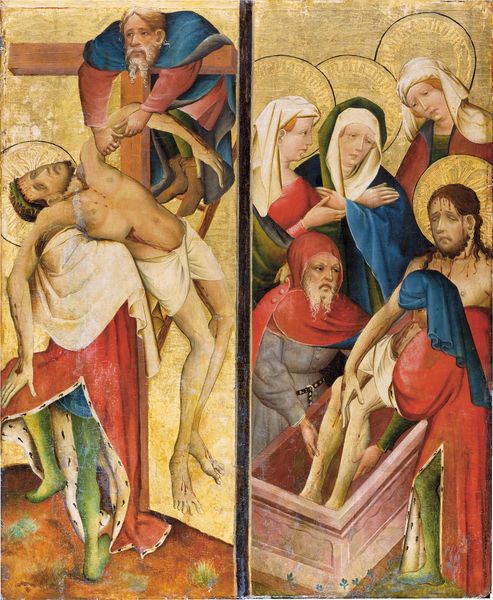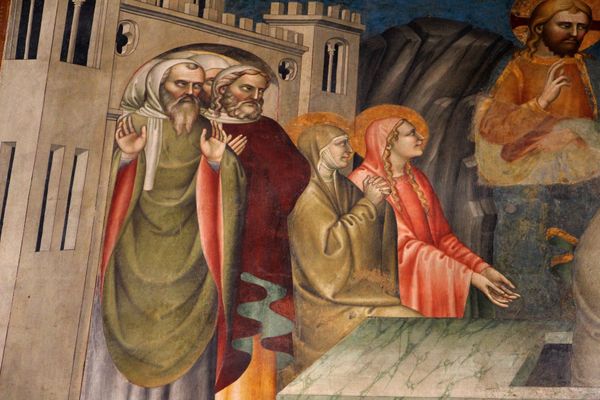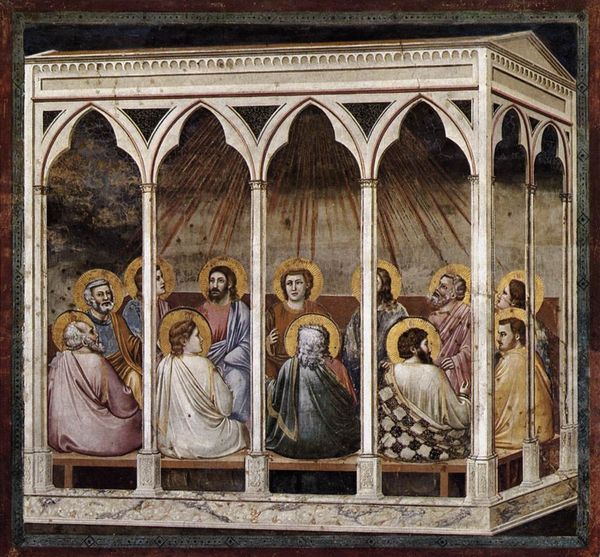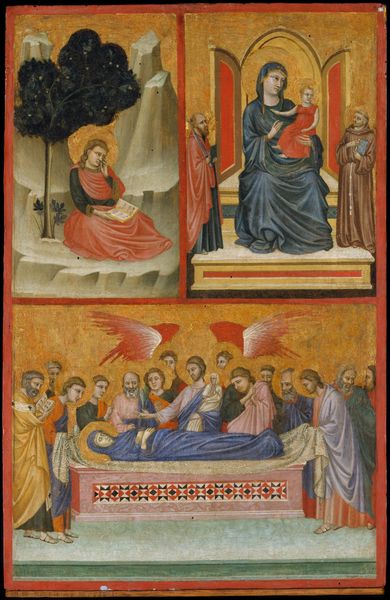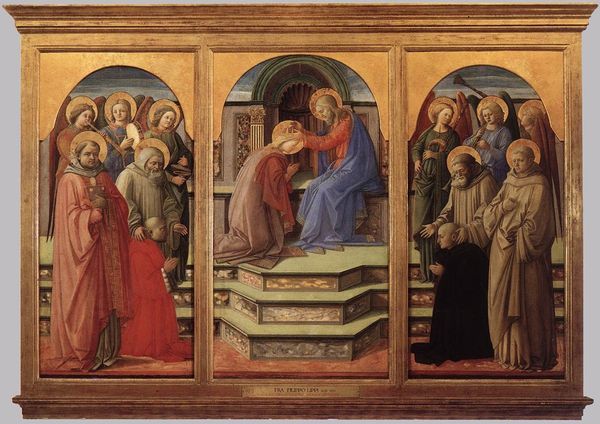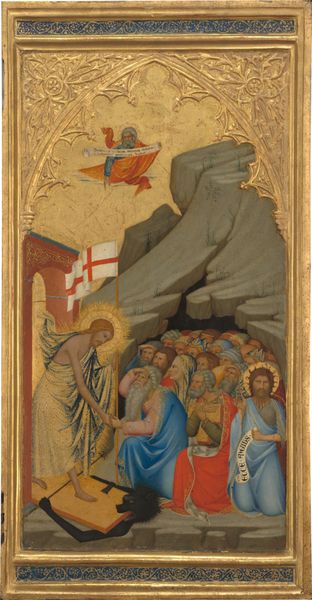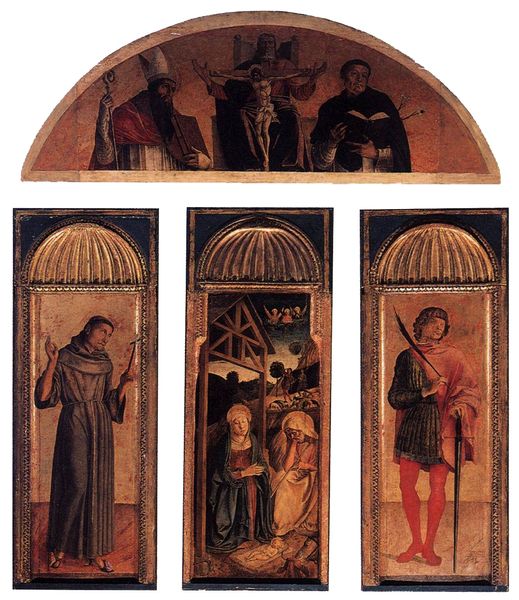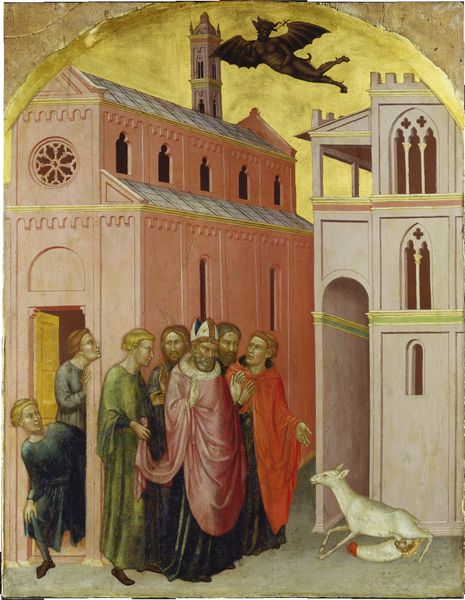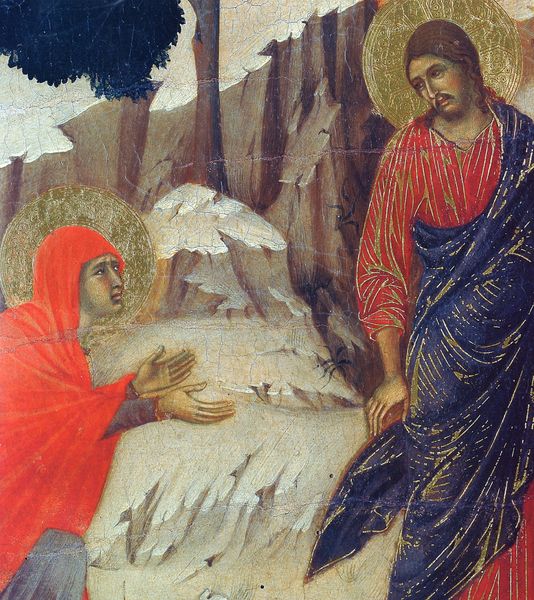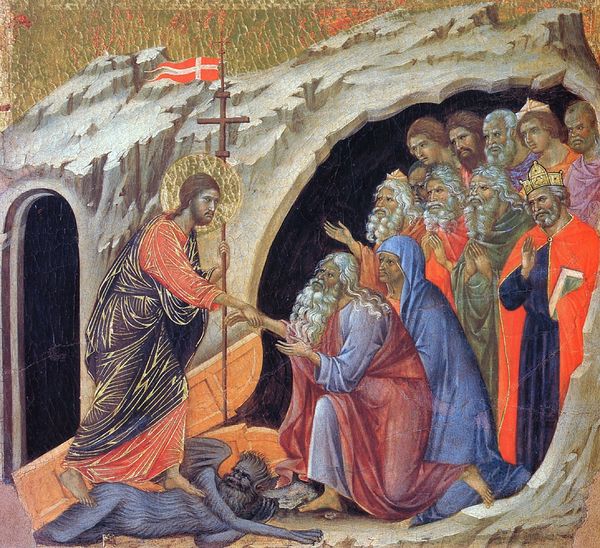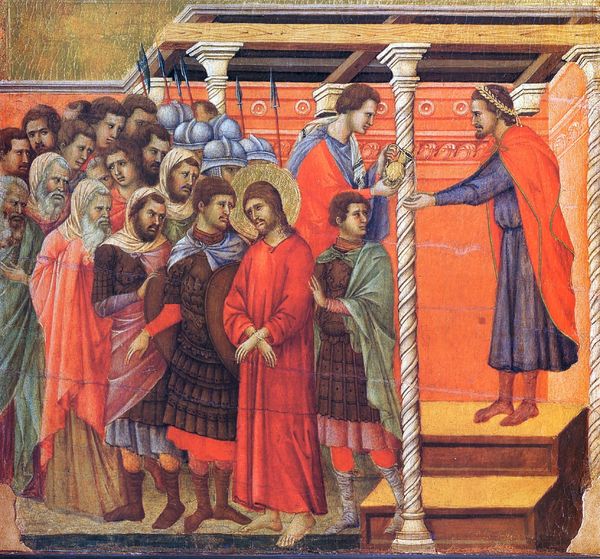
tempera, painting
#
narrative-art
#
tempera
#
painting
#
figuration
#
oil painting
#
naive art
#
history-painting
#
italian-renaissance
#
italy
#
early-renaissance
Dimensions: 19 x 7 in. (48.26 x 17.78 cm) (panel)
Copyright: Public Domain
Bartolomeo di Tommaso's "Pentecost," made in the 15th century, captures a pivotal moment in Christian history with a visual language deeply rooted in its time. The scene depicts the descent of the Holy Spirit upon the apostles. Notice how their expressions are rendered, with the gold halos emphasizing their holiness and divine selection, reflecting the religious and social values of the Renaissance era. During this time, the church played a crucial role in dictating artistic themes. The use of color and light serves to create a spiritual experience for the viewer. The gold background, typical of the period, symbolizes divine light, while the figures are painted with careful attention to detail. As we look at it today, "Pentecost" invites us to reflect on the ways in which cultural and religious narratives were visually constructed and disseminated, shaping identities and beliefs within Renaissance society.
Comments
minneapolisinstituteofart almost 2 years ago
⋮
In this scene from the New Testament, the twelve apostles were gathered in a room after Christ's death and ascension into heaven. Suddenly there appeared on each of them tongues of fire. They were filled with the Holy Spirit, represented by the dove above them, and each began to speak in a different language. The theme of Pentecost is common in Christian art after the Middle Ages, since it marks the birth of the Church itself. Tommaso da Foligno takes his name from his native town in Umbria, but during his career he executed large fresco cycles in various other Italian cities. His style is marked by a vivid imagination, an expressionistic treatment of forms, and innovative compositions.
Join the conversation
Join millions of artists and users on Artera today and experience the ultimate creative platform.

